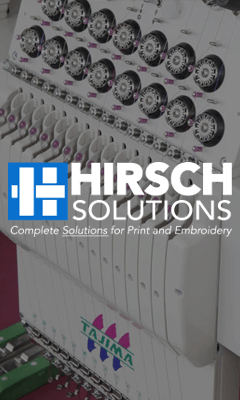Some reflections at year’s end on lies and truth in our industry, here are a lucky 7 of each for you:

Lies:
- “One Coat” ink is the answer to all your printing problems.” I made that name up, but no ink is the answer to all your printing problems. There is no miracle white ink either. You need to learn proper printing techniques and you have to have a printing system that works on all levels. Starting with proper artwork, then into proper screens, the right squeegee, leveled platens, and on and on. It is a system that gets you results, not a miracle product.
- “You can save $5 a gallon on emulsion with Miracle Products emulsion.” The proper evaluation of an emulsion is your production numbers not the price tag. I can’t tell you how many printers I run into that think they are saving a few bucks on some supplies only to see them spend hour after hour trying to set up jobs where they didn’t have the proper resolution, or hours stopping the press to fix pinholes. Time is money and needs to be in any calculation of true cost.
- “If I only could hire a good printer…” Look around and in your own shop you probably have some talent that is unrecognized. The bonus is that they know your business, you know them, and they fit into your company culture. I gave up a long time ago on finding folks from outside, as they usually did not understand how we do things and screwed all kinds of our systems up by making what they thought were improvements. Marty Bailey was my friend who ran American Apparel manufacturing and I learned from him how he did kick ass production: train people, give them good tools that are in good working order, organize them sensibly, tell them clearly what they are supposed to accomplish, and give them incentives. That is pretty simple, but not particularly easy. However, it is easier than looking for superstars.
- “I can print great, we print at 60 Newtons, we can hold a 200 micron dot, we print at 130 line screen, blah blah blah.” Metrics can be important, but the real important thing is that at 6 feet away the shirt looks good, and that the customer is happy enough to pay you this time and use you again. Numbers are tools to get those results, they are not the results themselves.
- “My press can print 1200 shirts an hour.” The rotation speed of the press is one of the most overrated statistics about a press. What is so much more important is how fast the press sets up and how able you are to keep it running. When it is broken, while you are adjusting it, while you are putting a different size platen on it, while you are setting up, while you are stopping to make printing adjustments, and while you are breaking it down you are printing 0 shirts an hour, and that brings your average down pretty damn fast. How many good shirts can you get printed in a day is the important statistic, not the fastest speed you attained.
- “I’m a screenprinter.” If you are just a screenprinter these days you usually are a fool. You are a decorator, whether you like it or not. With the incredible variety of decoration wanted by your customers and the even bigger variety of fabrics and styles of garments, you need every type of decoration out there to accomplish what your clients want. Transfers are no longer some crappy Farrah Fawcett or Care Bears thick film that crack, they are coming in hundreds of highly technical variations. You need them for that short run you don’t have time for, for that little print they want on a pocket or two-ply neck, for that mesh jersey, for that backpack side pocket, for that thin fabric that scorches. You don’t have to do it all yourself, but as a decorator you should now have sources for sublimation, flock, so many types of transfers, DTG, pad printing, laser etching and on and on. Of course equally false is the often heard statement that “Digital will replace all screenprinting.” I think the companies that sell this equipment love this idea, but this is not happening anytime soon. Even on-demand printing which is one of the best uses of Direct to Garment printing isn’t faster than printing a bunch of shirts and putting them on the shelf. Digital still has lots of issues with consistency, matching colors and production speed. Digital printing is growing expotentially and that will continue, but no time soon will it replace screenprinting. Your job is to figure out when it makes sense and when it doesn’t. And also there is going to be lots of hybrid work of combinations of digital and screen together and that has barely started.
- “I cure my printed shirts at 365 degrees.” BS. BS. BS. Affecting the cure of your shirts is the time in the dryer, temperature of the shirt going in, humidity in the shop, moisture level in the shirt, atmospheric pressure (it can affect the exhaust,) thickness of the ink, color of the garment, fabric of the garment, type of dryer, color of the ink, power or gas pressure fluctuations. I get people all the time asking what to set their dryers to, and I tell them that even if you have the same exact equipment, that a printer who comes in Monday morning and puts shirts through on a cold April Monday morning in Maine after it rained for three days better set their dryer differently than the printer who comes in Monday morning in Arizona after a dry hot weekend where the building was all closed up with no AC. A friend that visits shops all over the country as part of their job says he thinks that at least 1/3 of shops are not curing their prints properly. Learn everything you can about curing, it isn’t easy to do right.
Truths
- “20% of your customers provide 80% of your profit.” Not only is this usually true about your income in small business but is true about many human endeavors, it is called “the Pareto Principle.” Apparently you can even take it further and 20% of the top 20% provide 80% of that profit, in other words 4% of your customers provide often make you 64% of your profit. Figure out who those folks are and make them a priority, which means a real priority (all your customers cannot be priorities…) Another part of that equation is that sometimes 20% of your customers are taking up 80% of your time and some of them are not profitable and you need somehow to get rid of them.
- “Get one big thing done every day.” Chuck Lacy who ran Ben and Jerry’s Ice Cream during its meteoric rise told me that one and it is a good one. Focus on that and you don’t get in the weeds about your long to-do list which never will get finished. Focus on that and you won’t waste your time on the trivial and so every day there will be progress. Be clear that one big thing is done and you don’t get paralyzed by fear and depression and you can keep the confidence going that you need to run a small business, which is not an easy task.
- “Don’t let them get out the ruler.” Don’t let that marginal shirt go out the door. If you are really wondering if it will pass, it probably doesn’t pass. What is worse is that if the customer finds that bad shirt, they will start staring at all the shirts and they get out the ruler and you are in a world of grief. There are currently not really any standards you can point to in an argument with a customer, so you don’t want to argue with them about placement, straightness, etc since human beings imperfectly both made and printed those shirts. Don’t let it start, only send out good work that you can stand behind.
- “Pigs get fat, hogs get slaughtered.” My buddy G quotes this one all the time and it is good to keep in mind. If you are too greedy with a customer it may someday open the door to a competitor making you look bad. A long lucrative (and fair) business relationship is ideal for everyone, don’t mess it up by being greedy.
- “Show me somebody that makes no mistakes and I’ll show you somebody that ain’t doing nothin’.” This one came to me from G’s Mom Bonnie. If you crucify your employees for an error you will get them hiding errors, leaving all the tough decisions to someone else, and you will ending up doing everything yourself. Mistakes need to be acknowledged, the same mistake repeatedly made are grounds for dismissal, but you will never have perfection and your best workers will sometimes make the biggest mistakes
- “The best testing device in your shop is a washing machine.” You can keep meticulous records, use pyrometers, heat probes and temperature strips, you can scratch, stretch and rub your garments at the end of the dryer but really the only test that is certain is if you wash a garment and the decoration stays on there. Do wash tests, everything else is indirect speculation.
- “Dye migration is real.” We test shirts for manufacturers and I can tell you with certainty that there are some 100% cotton shirts that bleed (the dye color goes into the ink color) and there are some 50/50 shirts out there that don’t even need low bleed ink. The days where you can use a low bleed ink on everything and feel certain that you were covering all bases are long long gone. You can put some hate on the garment people and cry about it, but it isn’t going to help, you are going to have to deal with it. Test your shirts (here is a link to tell you how to do the test) and learn to use every kind of dye blocking technique out there, which means low bleed, silicone inks, water-based ink, low temp ink, poly blocking inks, grey barrier bases and even black barrier bases. You’ll find issues where you expect them (digital camo) and sometime where you don’t expect (certain cotton shirts.) Read the fine print from the suppliers and whenever you can, test the shirts. It is the number one question I get asked and it is a problem that is not going away anytime soon. Dye migration is when the color in the dye of the shirt goes into the color of the ink, usually when it is subjected to heat. For example you print a red shirt and the dye in that shirt turns the white ink you printed to a pink color. It sometimes doesn’t show up for weeks and it can then get worse and worse, I’ve seen it max out taking over a year to full migrate. Nothing is worse than sending a perfect looking batch of 1000 shirts out to a customer who three weeks later asks you why the white ink is pink.
Be careful out there and Happy New Year!


Comments